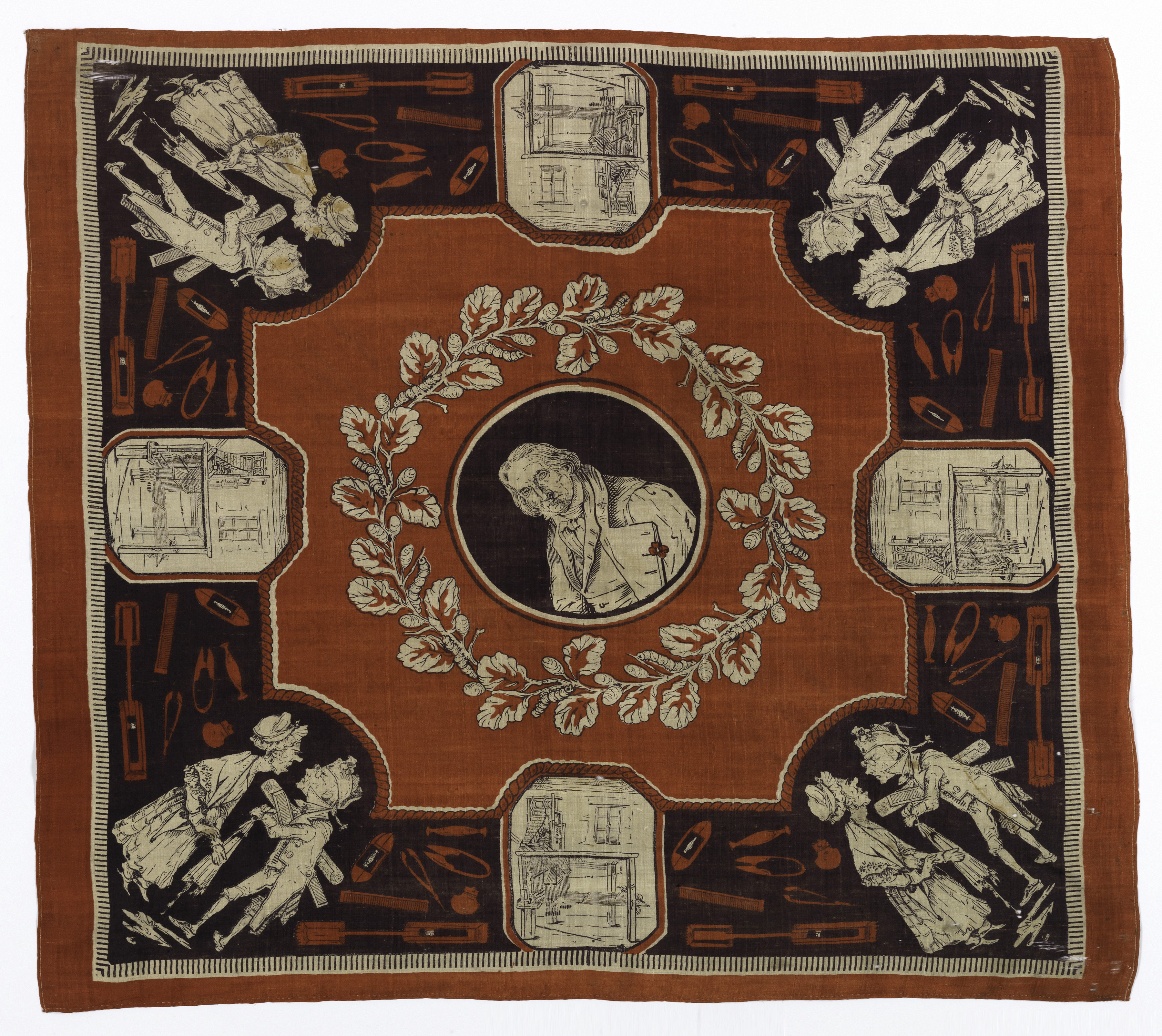In 1985, Cooper Hewitt received a gift of seventy-eight woven labels from ASL Industries of Great Neck, New York. The company specialized in the manufacture of woven labels for clothing, luggage, toys, and shoes. The majority of the gift included labels for major retailers and garment manufacturers like Gap and London Fog, but a few...
In the center of his handkerchief is a portrait of Marie Louis Jacquard (1752-1834), inventor of the jacquard loom. Patented in 1804, the loom included a punch-card mechanism for controlling the action of the warp, greatly simplifying the production of complex fabrics and revolutionizing the French silk industry, symbolized by the caterpillars and cocoons nestled...
This velvet exemplifies the prodigious skill of Italian velvet weavers in the latter half of the 15th century. The red silk pile is embellished with sparkling allucciolato, or metallic weft loops. The voided areas have no pile, but shine with supplementary wefts of silk wrapped in silver-colored metal. Italian velvet weavers developed a special technique...
The 1939 World’s Fair at Flushing Meadows Park in Queens was themed the ‘World of Tomorrow.’ Visitors came away with visions of radio-controlled highways, mechanical milking machines, and the 7-foot-tall Westinghouse robot. Many also left with Fair memorabilia, from the pins given away at the Futurama exhibition that read ‘I have seen the future,’ to...
This extraordinary kimono length transitions over its forty-five foot span from gray at one end to black at the other, creating a striking diagonal composition. The flawless line of the diagonal and the evenness of the gray color, the result of crossing white warps with black wefts, is a testament to the skill of the...
In Europe and the US, middle- and upper-class women followed strict and complicated etiquette guidelines in daily life, including after a family member’s death. Etiquette dictated that a survivor follow at least two phases of mourning—deep followed by half, or second, mourning—to publicly proclaim her grief. Deep mourning, when she was expected to seclude herself...
This headscarf is one of a series known as the Ascher Squares, produced as part of an historic collaboration between Ascher Studios, an haute couture textile company in London, and more than fifty modern artists, including Henry Moore, Jean Cocteau, Alexander Calder, and painter André Derain, who designed the headscarf featured here. Ascher Studios gave...
This Spanish textile features confronted leopards or cheetahs within a geometric framework, an enduring motif that probably originated in early Islamic Egypt or Persia. Woven in the 15th century by Islamic weavers, this silk lampas may have been produced in Almería, a center of silk production in Andalucía and a source of blue and gold...
This Spanish silk, decorated with exotic and imaginary animals in pearled roundels, was most likely woven by Islamic craftspeople in 11th or 12th-century Spain. The roundels are bilaterally symmetrical and depict, from the top down, elephants, senmurvs (composite creatures with dog heads, lion paws, peacock tails, and wings), and winged horses. Patterns, like the zigzag...








